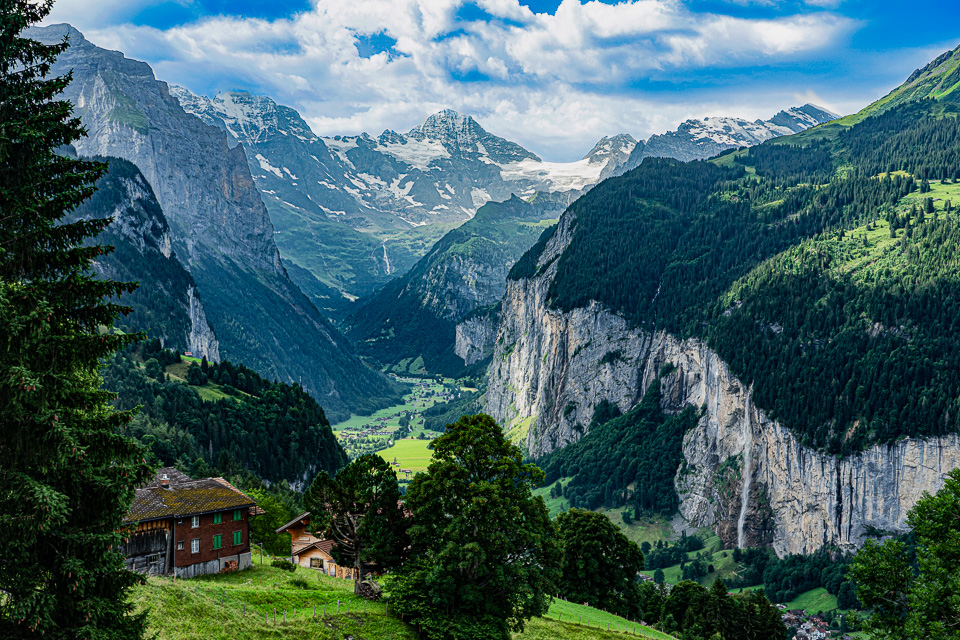
Let me give thanks, dear Lord, In the frailty of age, for the beloved mountains of
My youth, for those moments of revelation, when the temporal
Beauty of the mountains reinforces my faith in the eternal beauty which
Is not subject to decay.
—Sir Arnold Lunn, 1888-1974, British writer, mountaineer and skiing pioneer
We included the above quote by Sir Arnuold Lunn in the postscript of our 1986 film, Swiss Diary, based on a winter ski trip to the Bernese Oberland, a region with some of Switzerland’s mightiest alpine peaks. His elation matched our own emotional response to these mountains.
The film, now deteriorated, has several frames that offer a glimpse of the expansive Lauterbrunnen Valley, which is situated in the heart of this region. Now, years later, we decided to return to Switzerland and find that view again. We would photograph it in late summer, when the green fields contrast dramatically with the valley’s high granite cliffs and abundant waterfalls.
Some background is in order. Charles had a long relationship with this vista. At age 10, he had somehow convinced his parents, during a stay in Lucerne, to buy a large oil painting—a summertime view of the Lauterbrunnen Valley painted in the early 20th century. In subsequent years it was prominently displayed in his childhood home and, later, in our Manhattan apartment. The beauty of the painting had always inspired us. But it was large and hard to move, so we reluctantly parted with it when we left New York. Now our hope was to photograph a similar scene, bring the Bernese Oberland into our lives once again and bring full circle our artistic journey.
About Sir Arnold Lunn
We learned more about Lunn during our recent trip to the village of Mürren in the Lauterbrunnen Valley. The walls of the small Hotel Eiger are covered with portraits and pictures of him and his friends on the ski slopes. Not surprising: He’s considered the father of modern alpine skiing, and Mürren was his long-time base. The owners explained he had been a family friend and frequent guest.
We immediately understood why he appreciated this small family-owned-and-run accommodation, established in 1886. Perched on the rim of a canyon, the hotel offers unsurpassed views across the valley to the Eiger (13,025 ft.), Monch (13,448 ft.) and Jungfrau (13,642 ft.) mountains, all visible from the dining terrace and half of the rooms. Furthermore, this accommodation has always enjoyed a reputation for excellent service and amenities.
Lunn became a respected writer upon graduation from Oxford and penned travel guides, mountaineering books and essays on philosophy, politics and religion. Later, he developed a passion for skiing. In 1922, he introduced slalom gates and the modern alpine slalom race. He also established Mürren’s Inferno, said to be the longest downhill ski race in the world (approximately 8 miles).
Also noteworthy was Lunn’s gradual spiritual evolution. His connection with the Swiss alps transformed him from an agnostic to a devout Christian.
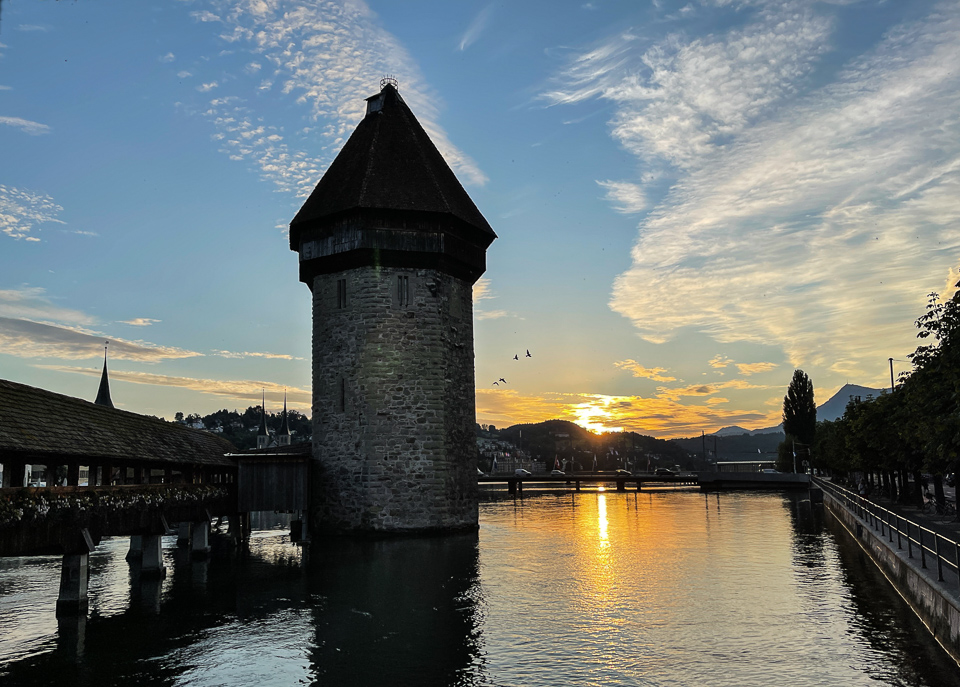
A Return Journey
Our trip began and ended in Zurich. After a comfortable non-stop flight from Washington D.C., we started on a 10-day adventure that included Lucerne, Zermatt and various towns and villages in the heart of the Bernese Oberland.
As on previous trips, Switzerland impressed us with its gracious people, state-of-the-art infrastructure and well-functioning democracy. Key public issues are decided by citizen referendums and everyone is encouraged to vote. All this is a stark contrast to the United States, which is struggling to modernize an aging infrastructure and to overcome the irony of being the world’s only advanced democracy where attempts to suppress the vote are widespread.
Following are a few highlights of our trip:
Anniversary in Lucerne
Lucerne, located along the shores of its namesake lake and the Reuss River, appeared even more beautiful than we remembered from an earlier visit—much like a place in a fairytale.
Tall church spires, 14th-century fortifications and the oldest covered, wooden bridge in Europe (built c. 1360; restored in 1994 after a fire) embellish the city’s pedestrian-friendly center. Originally a fishing village that surrounded a monastery, the city was founded, it is said, because an angel shone a light on the site. (Its name derives from lucerna, Latin for “lamp.”)
We re-familiarized ourselves with the city on foot, then took the cogwheel train (the steepest cog railway in the world!) to the peak of 7,000-foot-high Mt. Pilatus. Taking in the stunning views of Lake Lucerne and the distant alps was the perfect way to become acclimated to the country.
We celebrated our 41st anniversary on the terrace of the venerable Schweizerhof Hotel, now celebrating its 175th anniversary. Past its signature array of colorful flags that front the building was a grand neo-classical lobby with its tall molded ceilings, mosaic tile floors and exuberantly patterned marble columns.
From our table overlooking the lake, we watched processions of small boats glide across calm waters. A player piano in the adjacent lounge softly played classical music and old standards. Our dinner featured a vegetable tartar flavored with nuts and coriander and a grilled chicken entrée served with ravioli, spring onions and deep-fried mozzarella balls. Swiss wines were a delightful surprise—dry yet full of flavor. (Many Americans aren’t familiar with Swiss wines, which are rarely exported.)
The Schweizerhof has hosted a parade of notable guests over the years—emperors and empresses, kings and queens, writers, and artists. Here, Tolstoy penned one of his novels and Richard Wagner completed the opera Tristan and Isolde. Sergei Rachmaninoff visited during the 1930s when he owned Villa Senar, a nearby lakefront estate. There, he completed both the Rhapsody on a Theme of Paganini and Third Symphony.
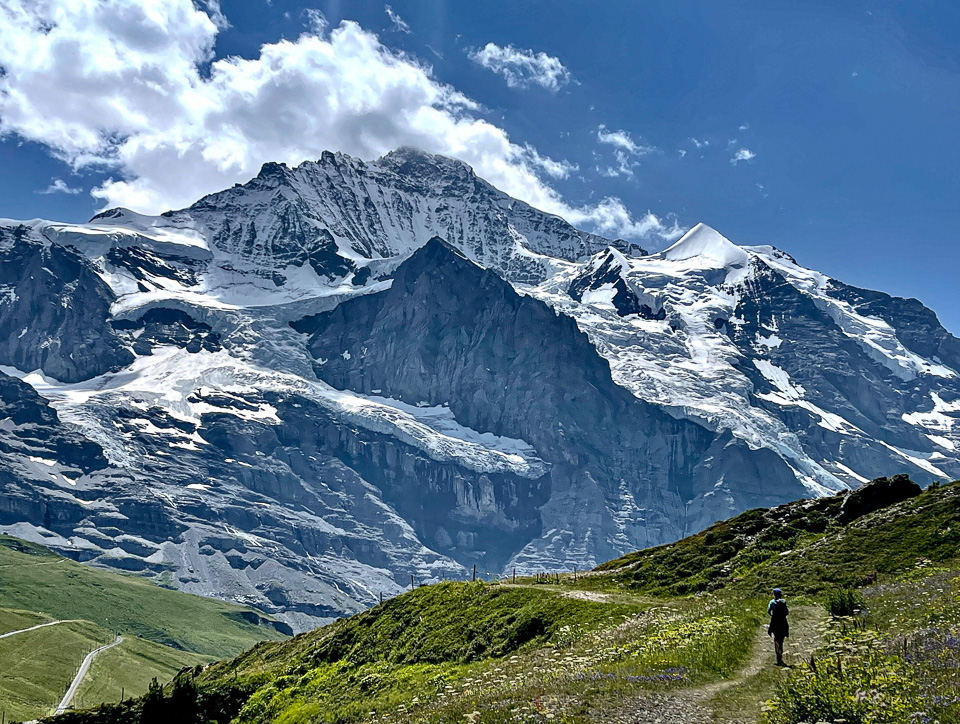
Grindelwald and environs
Soon we were off to the Bernese Oberland and the village of Grindelwald. Situated on the doorstep of some of the country’s most impressive mountains, the town has long been a popular base for alpine skiers in winter and paragliders and hikers in the summer. Soon after arriving, we hurried to the popular First Cliff Walk at the summit of First Mountain—a 25-minute gondola ride from Grindelwald. Here, a 6,500-foot-high steel walkway, secured precariously to the side of the mountain above a deep abyss, offers stunning alpine views. Just remember to leave your fear of heights behind!
On our second day in Grindelwald, we took a 30-minute train ride to the small mountain station of Kleine Scheidegg. The Panorama Trail begins just across from the station and continues for 5 ½ miles to the town of Männlichen. With limited time, we hiked only part of the way, preferring to spend our day watching sunlight reflect off the faces of the Eiger, Monch and Jungfrau mountains and reclining in a field of delicate wildflowers. Lulled by cowbells and the murmur of a rushing stream, we lingered until late afternoon in this pastoral heaven.
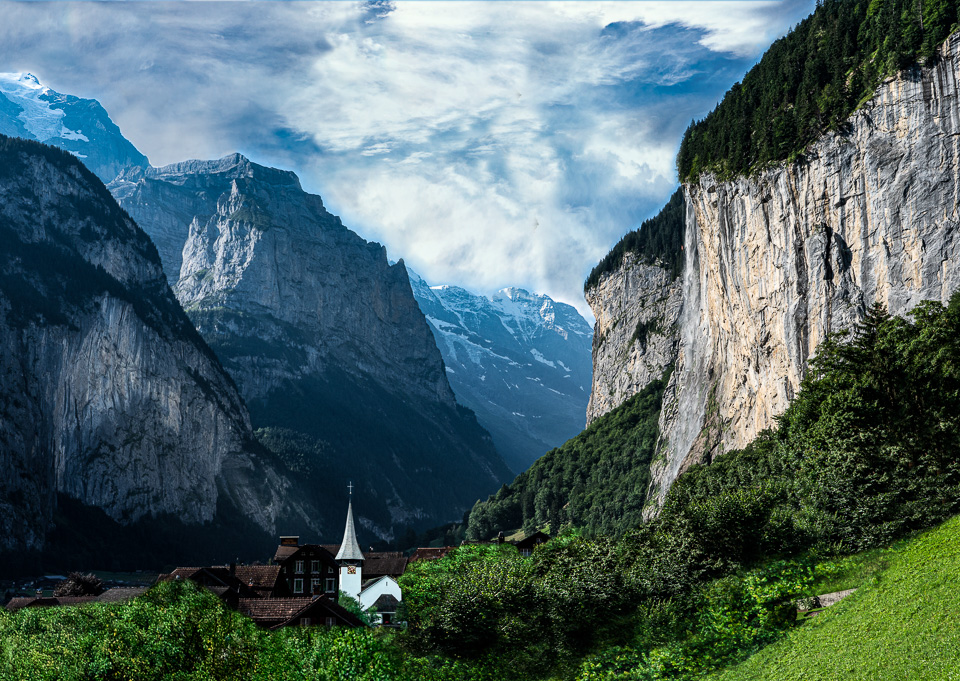
Lauterbrunnen Valley
We set out the next morning with a car and driver to seek our Holy Grail—the best general views of the Lauterbrunnen Valley. With its 72 thundering waterfalls (the highest and most famous is the 900-foot-high Staubbach Falls), deep gorges and verdant alpine meadows, the valley is reminiscent of Yosemite, albeit on a grander scale. The name Lauterbrunnen, in fact, means “many fountains.”
Our stay lasted two nights the first in the small town of Wengen and the other in Mürren at the Hotel Eiger. Perched on the rims of opposite canyon walls, both villages have dramatic alpine views.
With limited time, we hurried to find and photograph the best views of the valley—both from the valley floor and the rim of the canyon near Wengen. Obstacles frustrated us—too many houses here, a construction site there—not exactly the rural early 20th-century scene in our painting. But we persisted.
We slipped into backyards on the valley floor and climbed steep, slippery hillsides. On the terrace of a vacant house in Wengen, we discovered a wonderful view from the canyon rim. Multiple train and gondola rides revealed more perspectives. We discovered that, for only a few seconds, either ascending or descending by train, the entire valley comes into full view in all its glory. We were ready to capture the scene. But did we get a memorable image? We wouldn’t know until we had time to study the results….
The next day, a 12-minute cable car ride transported us to the summit of the Schilthorn, (9,740 ft.). [Fun fact: The 1969 James Bond movie, On Her Majesty’s Secret Service, was filmed here] The 360-degree view at the top includes the Eiger, Monch and Jungfrau mountains, as well as the Jura Mountains, the Vosges Mountains, the Black Forest and even France’s Mont Blanc. With such a grand panorama spreading out below us, we felt we’d arrived in heaven. Little wonder it’s said that the Alps place you close to God.
The traditional village of Gimmelwald is just a few minutes from Mürren on foot or by cable car. No cars allowed here. Wooden chalets with colorful flower boxes, barns and vegetable gardens border the main pathway. Here and there, farmers and their families busily gathered hay, barely noticing us. The some 120 friendly residents fiercely protect their farming and cattle raising traditions and offer a glimpse of Switzerland as it once was everywhere. Little wonder it is said, “If heaven isn’t what it’s cracked up to be, send me back to Gimmelwald.”
Later, back at the Hotel Eiger, a British gentleman asked, “How do you two Americans know about Mürren?” His curiosity suggested we were a rare breed in those parts. And so we were. The British, who originally developed the area and have been coming here for over a hundred years, can be forgiven for their haughtiness when meeting interlopers.
Dinner and cocktails on the terrace followed, served under a quarter moon looking down on the Alps. Pure bliss!
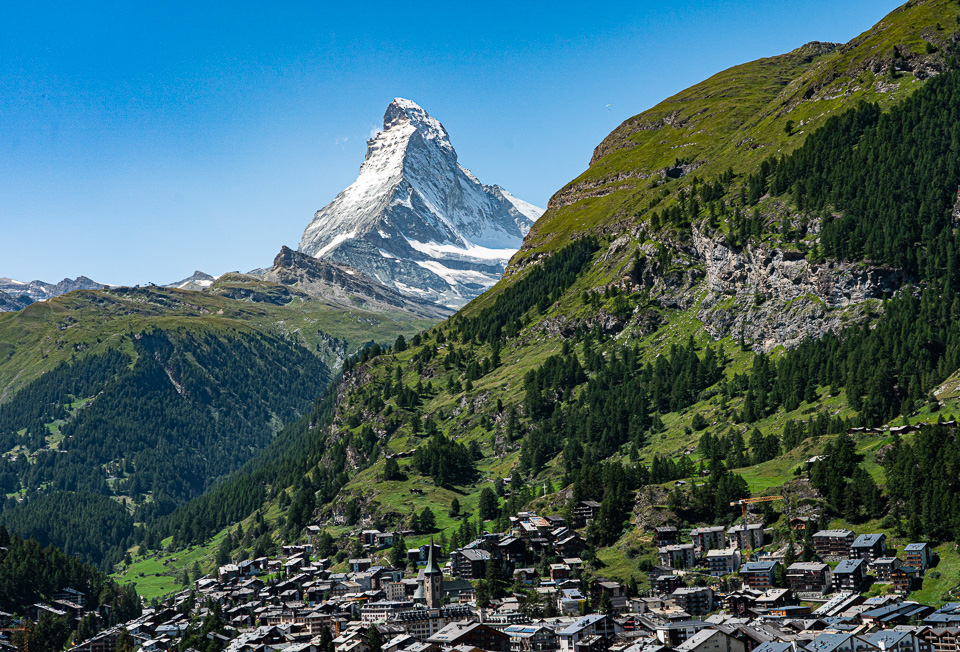
Zermatt
Our last stop before returning to Zurich and the flight home was Zermatt. This resort village (pop. 5,400) has been a tourist destination since the late 19th century. Chalet-style hotels and homes with flowers overflowing from window boxes border the narrow streets. Towering above it all is the 14,690-ft Matterhorn, a symbol of Switzerland and arguably the one of the most recognized mountains in the world.
Following the first ascent of the Matterhorn in 1865 and the arrival of train service to Zermatt, the town’s identity was established as a high-end destination for skiers, hikers and climbers. In more recent times, it has become a favorite for paragliders.
Busy Zermatt contrasted with the quiet of the mountains: Tourists rushed to and fro, bicyclists raced past us and church bells tolled. The Swiss and other Europeans, eager for a last outdoor adventure before the onset of colder weather and the school year, crowded the small streets and outdoor cafes. Everyone was basking in the sunshine after a summer of non-stop rain.
We took the cogwheel train to the top of the Gornergrat Mountain for a day of hiking. Leaving early in the morning meant we had the mountain to ourselves—except, of course, for the famous, Blacknose Sheep that graze freely on the slopes. (These adorable, friendly sheep, raised for their meat and wool, originated in this part of Switzerland.)
It was a glorious day with brilliant sunshine and clear skies. Unobstructed views of the Matterhorn, the nearby Breithorn and surrounding peaks spread out before us.
On our descent, we hiked the Riffelseeweg trail, which connects the Rotenboden and Riffelberg train stops. The fresh air invigorated us. The calming, church-like silence was interrupted only by the bells of grazing sheep.This trail is not strenuous and offers some of the area’s best alpine panoramas along the way. On a windless day, you can even see the Matterhorn reflected in a small lake just a short way down the slope. (Veteran travel writer Rick Steves, who specializes in Europe, has called this trail his favorite.)
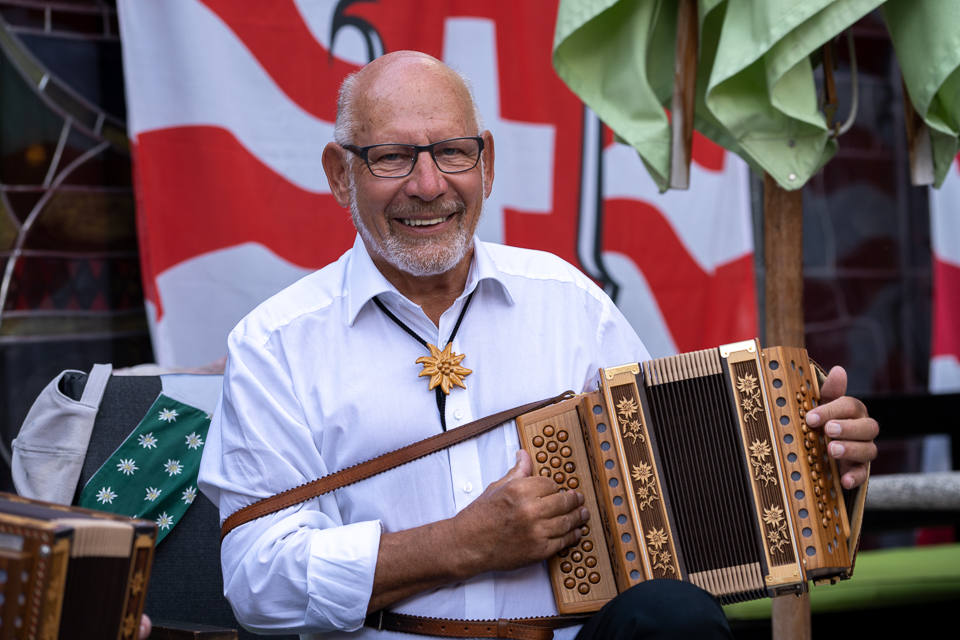
Zermatt has a variety of places to eat and drink. Among them are two excellent family-owned-and-operated restaurant, both highly regarded by the locals.
Restaurant Julen, centrally located in the village, offers traditional Swiss cuisine and wines in both indoor and outdoor settings. Most of the Blacknose sheep in the surrounding mountains belong to the owners. Entrees range from seafood, steaks and cheese fondues to a ragout of Blacknose lamb.
Sonmatten restaurant, situated on a small hill above Zermatt, offers temptations such as a Swiss veal steak or Wiener schnitzel, along with excellent salads. The bonus is a sunset view of the Matterhorn from the restaurant’s terrace.
Zurich
Back in Zurich on our final afternoon, we enjoyed a walk with a local guide around the city’s Old Town and waterfront. Zurich, which is the largest city in Switzerland, charming. Although it has a population of just over 400,000, it’s pedestrian friendly and easy to navigate. Home to an excellent university (Nobel-Prize winning physicist, Albert Einstein, graduated from the polytechnic school in 1900.) as well as many world-class restaurants, sidewalk cafes and fashion boutiques, the city has a trendy, youthful vibe despite its reputation as a staid banking center.
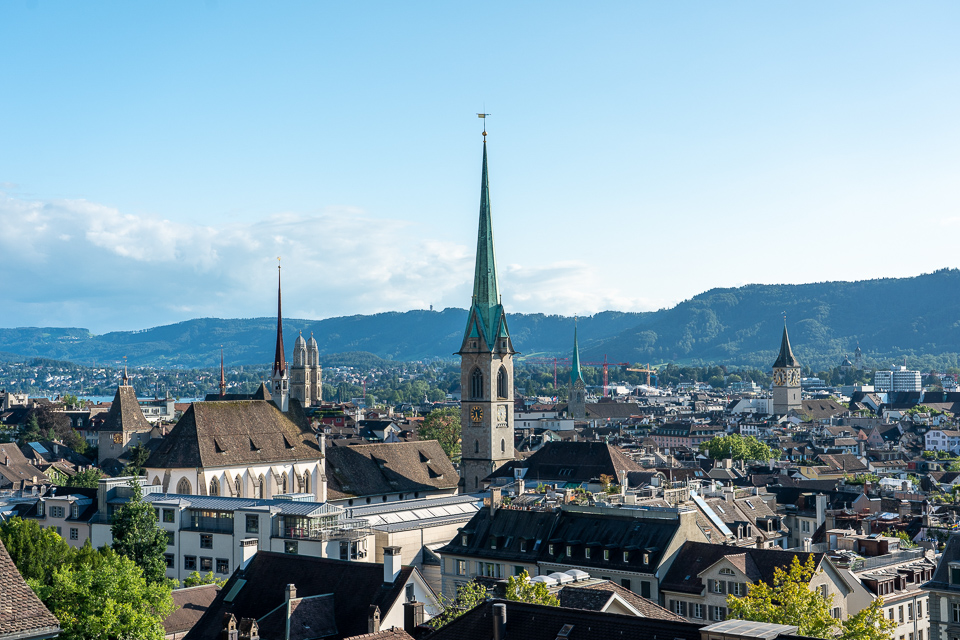
On our last day, we couldn’t resist shopping for some Sprüngli chocolates, regarded as Switzerland’s fines. Since we were told we couldn’t buy the brand in the United States, we stocked up on giant chocolate bars (the size of a Samsung Galaxy) at the main store on Bahnhofstrasse. Our favorite? The dark chocolate one bursting with hazelnuts as big as marbles!
And what about those photographs of the Lauterbrunnen Valley? We’ll simply say that we were pleased with our results but will let others judge the images for themselves!
We confess it wasn’t long after arriving home that we were planning a return to Switzerland for another mountain high!
Some useful references:
Swiss Web Site: myswitzerland.com (The country’s official web site offers destination stories and travel suggestions for every region.)
Kensington Tours: kensingtontours.com (An top travel company for independent travelers planning custom trips)
Hotel Schweizerhof (Lucerne): schweizerhof-luzern.ch/en/ (A centrally located 5-star hotel on Lucerne’s waterfront)
Hotel Eiger (Murren): hoteleiger.com (An outstanding 4-star, family-run hotel with all the amenities you could possibly want)
Daniella Hotel (Zermatt): julen.ch/en/hotel-daniela (Excellent, friendly and centrally located hotel)
Grand Hotel Zermatterhof (Zermatt): Zermatterhof.ch/en/home (A 5-star hotel built in 1879).
Sorell Hotel (Zurich): sorellhotels.com/de/zuerech (Comfortable, friendly hotel located near the city’s waterfront)
